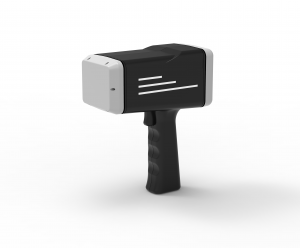Case Background: A Municipal Drainage Department in Johor, Malaysia
Project Name: Urban Stormwater Drainage System Capacity Assessment and Optimization Project
Location: Johor Bahru area, Johor State, Malaysia
Application Scenario:
Malaysia, particularly in states like Johor on the East Coast, faces annual threats from seasonal heavy rains and flash floods. Parts of the drainage system in Johor Bahru were built years ago and need reassessment due to increased urbanization from development. The municipal department required a fast, safe, and accurate tool to monitor flow rates at hundreds of discharge points and open channels across the city without the need for direct contact with the water.
Why Choose a Handheld Radar Flow Meter?
- Safety and Efficiency:
- Safety: Drains and rivers in Malaysia can harbor snakes, insects, debris, and other hazards. Radar flow meters enable non-contact measurement, allowing engineers to operate from bridges or riverbanks, completely avoiding direct contact with floodwater or sewage and significantly improving worker safety.
- Efficiency: Measuring a single cross-section typically takes only a few minutes, enabling dozens of sites to be surveyed in a single day. This is ideal for large-scale census work.
- Handling Complex Flow Conditions:
- During rainstorms, water flow becomes turbulent, murky, and carries significant debris (leaves, plastics, etc.). Traditional mechanical flow meters can get clogged or damaged, whereas radar waves are unaffected by water quality or floating objects, ensuring stable performance.
- Portability and Rapid Deployment:
- The equipment is lightweight and ready to use immediately. Teams can quickly reach various measurement points located along roads, near jungles, or in residential areas and begin work instantly without complex setup.
Integrated Data Solution:
For a comprehensive monitoring system, the radar flow meter can be part of a larger solution. A complete set of servers and software with wireless module, supports RS485, GPRS, 4G, WiFi, LoRa, and LoRaWAN connectivity, allows for real-time data transmission from the field to a central office. This enables continuous monitoring and instant alerts.
For more sensor information, please contact:
Honde Technology Co., LTD.
Email: info@hondetech.com
Company website: www.hondetechco.com
Tel: +86-15210548582
Actual Workflow:
- Site Planning: Based on drainage network maps, key monitoring points were established at critical drainage outlets, main stormwater channels, and river sections prone to flooding.
- On-Site Measurement:
- A technician stands at the measurement point (e.g., on a bridge) and aims the handheld device at the water surface below.
- The device is activated; its radar wave hits the water surface, measuring the surface velocity via the Doppler effect.
- Simultaneously, the technician measures channel parameters like width, slope, and water level, inputting them into the device.
- Data Processing:
- The device’s built-in algorithm automatically calculates the instantaneous flow rate and cumulative flow by combining the surface velocity and cross-sectional data.
- All data (including time, location, velocity, flow rate) is stored in the device or transmitted in real-time to the office via a mobile app.
- Analysis and Decision-Making:
- Municipal engineers compare the flow data from different rainfall intensities with the design capacity of the drainage network.
- Application of Results:
- Identify Bottlenecks: Precisely pinpoint which pipe sections become bottlenecks during heavy rainfall.
- Plan Upgrades: Provide scientific data to support planning for system upgrades (e.g., widening channels, adding pumping stations).
- Calibrate Flood Models: Provide valuable field data to calibrate the city’s flood warning models, improving prediction accuracy.
Other Potential Application Cases in the Malaysian Market
- Agricultural Irrigation Management:
- Scenario: In the paddy irrigation schemes of Kedah or Perlis. Water resource authorities use handheld radar flow meters for regular inspections of flow distribution in main and subsidiary irrigation canals, ensuring water is allocated fairly and efficiently, thereby reducing disputes between upstream and downstream users.
- Industrial Discharge Monitoring:
- Scenario: In industrial estates in Pahang or Selangor. Environmental departments or companies themselves use the device for spot checks or compliance monitoring at factory wastewater outfalls, quickly verifying if discharge rates are within permitted limits to prevent unauthorized or excessive discharge.
- Hydrological Research and Education:
- Scenario: Research teams from Universiti Kebangsaan Malaysia (UKM) or Universiti Putra Malaysia (UPM) use handheld radar flow meters as primary tools for field data collection in watershed studies. Its simplicity allows students to learn quickly and acquire reliable research data.
Key Considerations for Marketing this Device in Malaysia
- Climate Adaptation: The device must have a high Ingress Protection rating (at least IP67) and resistance to high temperatures and humidity to withstand Malaysia’s tropical rainforest climate.
- Training and Support: Providing excellent training and manuals in Malay or English is crucial. While the device is simple, proper operation (e.g., cross-section measurement, angle maintenance) is key to accuracy.
- Cost and Value Proposition: For local governments and SMEs, the initial investment requires justification. Suppliers must clearly articulate the total value in terms of long-term labor savings, safety risk mitigation, and data-driven decision-making.
In summary, the core value of handheld radar flow meters in Malaysia lies in their safety, speed, and non-contact nature, perfectly addressing the pain points of flow monitoring in a tropical, rainy, and complex environment. They provide a modern, efficient solution for water resource management, urban flood control, and environmental protection.
Post time: Oct-31-2025



